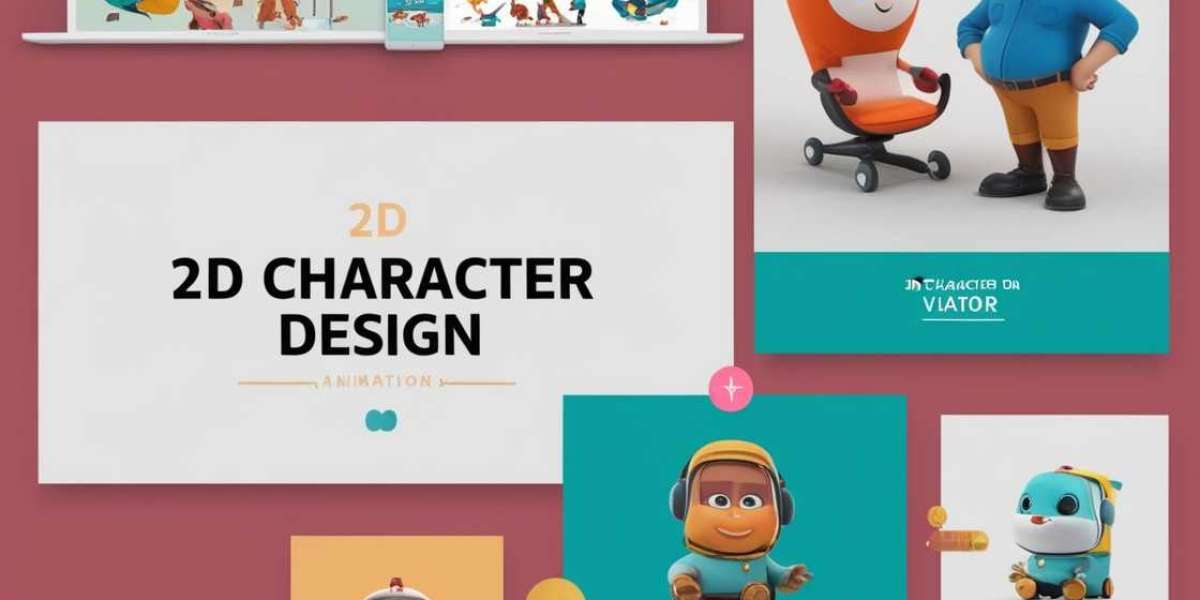1. Defining Your Character's Concept
The first step in 2D animation character creation is defining who the character is. This includes their personality, background, motivations, and their role in the story. A well-defined character concept can make the design process more focused and effective. Ask yourself questions like:
- What is the character's purpose? Is the character a hero, a sidekick, or a background character?
- What is their personality? Are they optimistic, shy, rebellious, or cunning?
- How do they interact with their environment? A character’s lifestyle, surroundings, and social circle can shape their appearance and attitude.
These details will inform many of your design choices, helping you decide on colors, shapes, expressions, and even movements that bring out the essence of your 2D character design.
2. Mastering Shape Language
Shape language refers to the use of simple shapes—such as circles, squares, and triangles—to give a character their basic form. Each shape conveys different qualities:
- Circles: Represent friendliness, approachability, and softness, making them ideal for gentle or humorous characters.
- Squares: Suggest stability and strength, suitable for reliable or grounded characters.
- Triangles: Indicate dynamism and edginess, often used for characters with more aggressive or cunning traits.
Using shape language allows a character artist to create designs that communicate personality instantly. For example, a hero character might combine squares for strength with circles to remain approachable, while a villain may be more angular and sharp to convey danger or unpredictability.
3. Creating a Recognizable Silhouette
A strong silhouette is essential for any character. In 2D cartoon characters, an effective silhouette makes the character easily identifiable even without internal details like colors or facial features. This is particularly important in animation, where characters need to stand out at a glance.
To test the strength of a character’s silhouette, fill in the entire outline with black and see if the character remains recognizable. If the unique aspects of their shape, like a prominent hat, distinct hairstyle, or unusual posture, are still noticeable, then you’ve achieved a strong silhouette. This technique ensures that your character remains visually distinct and memorable throughout the animation.
4. Developing an Effective Color Palette
The color palette is one of the most powerful tools in character creation, as it evokes emotions and enhances personality traits. For 2D animation character creation, understanding color theory helps in choosing colors that match the character's attributes:
- Warm colors (reds, oranges, yellows) are energetic, vibrant, and often associated with passion or warmth.
- Cool colors (blues, greens, purples) convey calmness, mystery, or intelligence.
- Neutral colors (browns, grays, blacks) often represent grounded, serious, or stable characters.
Consider keeping the palette simple, with one primary color and one or two accent colors, as this makes characters more recognizable and easier to animate. You may also want to use complementary colors for characters who need to stand out against their backgrounds.
5. Expressive Features and Proportions
A crucial part of character creation is the face, as it allows the audience to connect emotionally with the character. When working on 2D character design, it’s essential to create expressive facial features that can easily convey emotions. Some tips to make characters more expressive include:
- Large eyes for youthful or innocent characters, which can make emotions more visible.
- Unique eyebrows for added personality; thin, high arches may indicate curiosity, while thicker, low brows can signal strength.
- Mouth and nose proportions that fit the character’s personality; exaggerated features work well for comedic characters, while more realistic proportions may be suitable for serious ones.
Experimenting with different features and facial expressions helps bring the character to life, making them relatable and memorable.
6. Creating Flexible, Animated Movements
In 2D animation character creation, it’s essential to design characters that can move fluidly. This requires considering the character’s physical build, attire, and personality traits. A nimble character might have a lean build and streamlined costume, while a strong, heavy character might move slower with a bulkier frame.
Focus on poses that reflect the character’s core personality. For instance, a heroic character might stand with a broad stance and upright posture, while a shy character might appear slightly hunched. Sketching out a few “key poses” can help you develop gestures that reinforce the character’s unique traits.
7. Adding Accessories and Props
Accessories add depth to 2D cartoon characters, helping define their personality, profession, or interests. For example, a scientist character might carry a notepad or a magnifying glass, while a musician might have headphones or a guitar. These items add narrative elements that make the character feel more complex and real.
When designing accessories, keep in mind that they should complement rather than overpower the character. Also, consider how these accessories will behave in motion; for instance, a cape will flow differently from a hat or glasses.
8. Drawing Inspiration from Existing Characters
Learning from other 2D graphic characters is a great way to understand what works in character design. Study iconic characters from animations, comics, and even video games, paying attention to their shapes, colors, and proportions.
By analyzing how other characters are designed, you can get insights into what makes them visually appealing and memorable. However, while it’s fine to be inspired, aim to create a unique character with distinct qualities that resonate with your story and audience.
9. Testing and Iterating Your Design
Character design is an iterative process. You may not create the perfect design in your first attempt, and that’s okay. Start with rough sketches and keep refining them until you’re satisfied with the result. Test different hairstyles, clothing, accessories, and expressions to see which ones suit the character best.
When finalizing your design, consider creating a model sheet with various poses, expressions, and angles. This sheet provides a comprehensive view of the character, making it easier to maintain consistency in the animation phase.
10. Preparing for Animation with a Character Sheet
A character sheet, or model sheet, is a reference that includes multiple views, poses, and expressions of the character. It’s a vital tool for animators as it helps maintain the design’s consistency. In your character sheet, include:
- Front, side, and back views of the character.
- Expression sheet with different facial emotions.
- Pose sheet showing the character in various action poses.
- Accessory close-ups if your character has any props or accessories.
This sheet will be invaluable for the animation team, ensuring that the character remains visually consistent in every frame.
Final Thoughts on What Are the Basics of 2D Animation Character Creation?
Designing a memorable and engaging 2D animation character requires a blend of technical skill, creativity, and storytelling. By following these foundational steps—from defining the character concept and shape language to developing expressive features and testing poses—you can create characters that connect with audiences and enhance your animation project.



